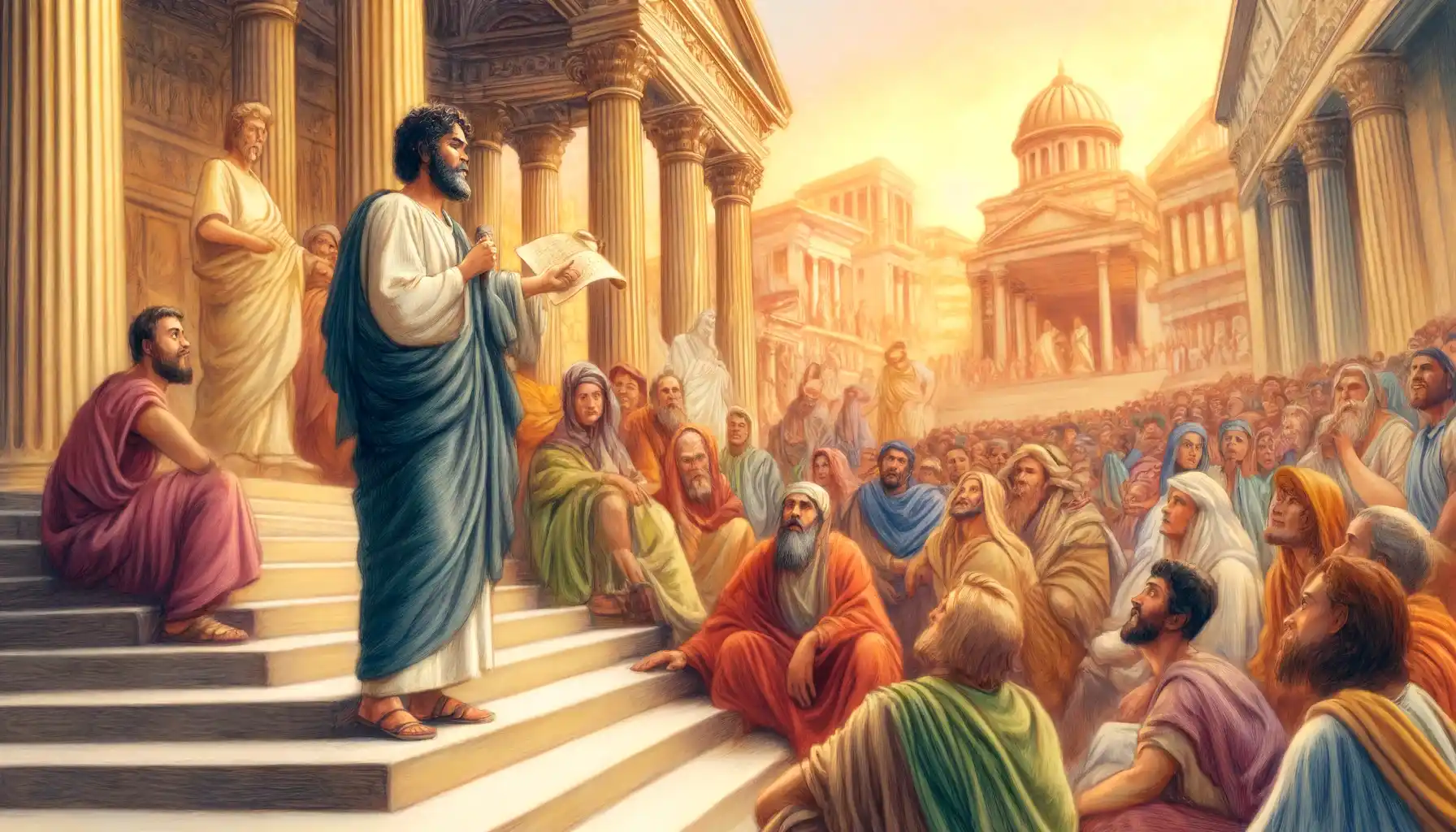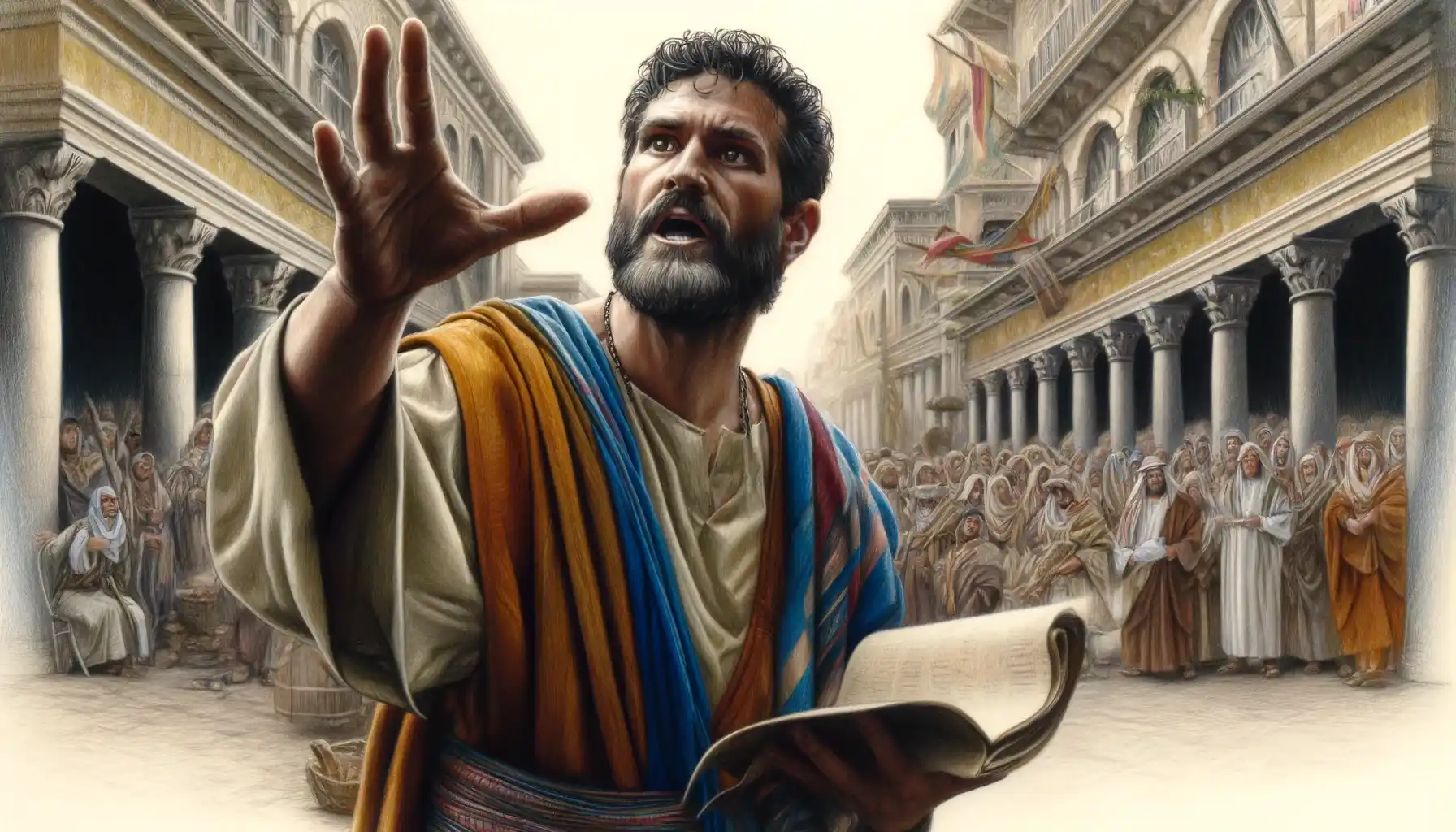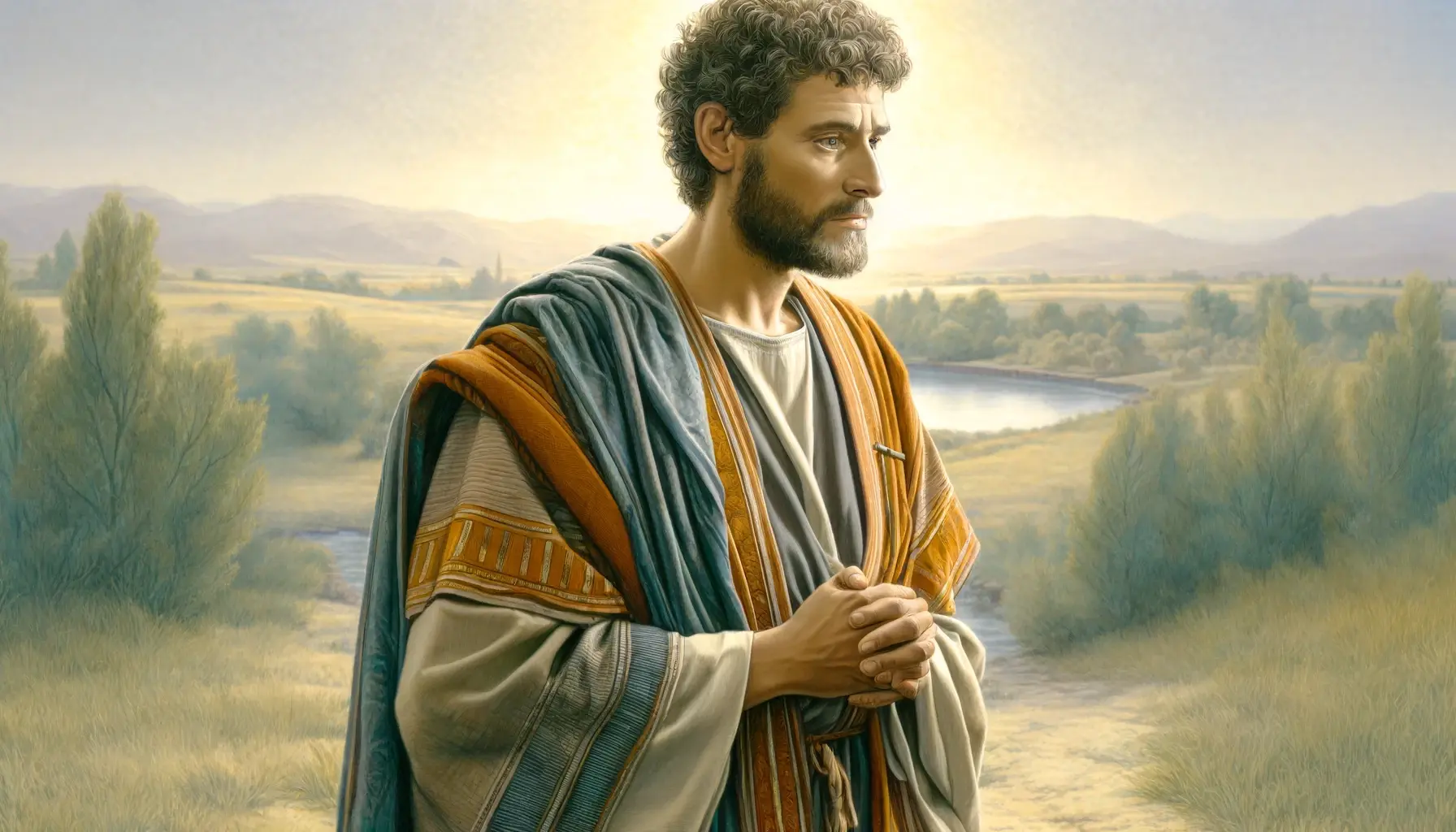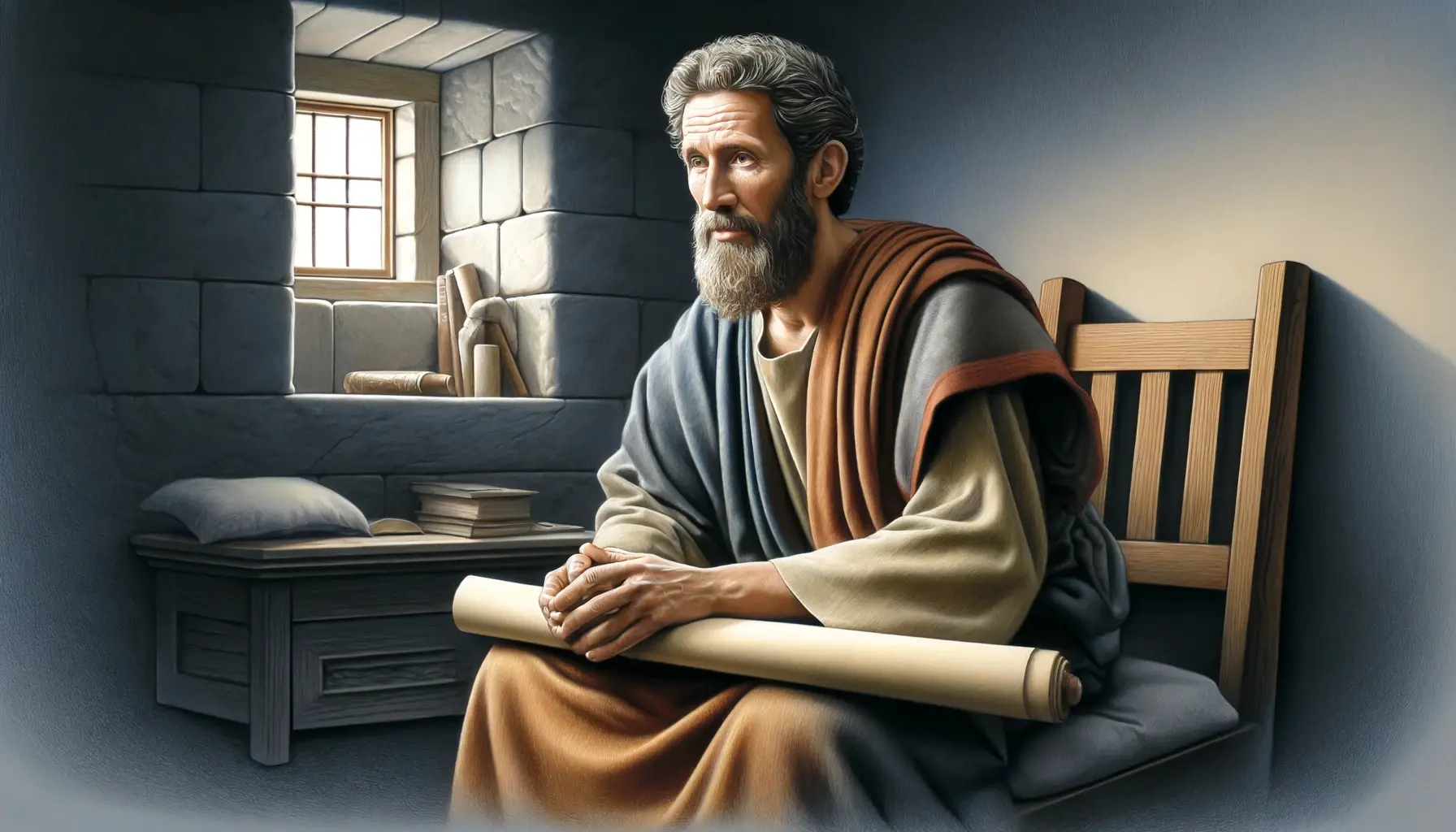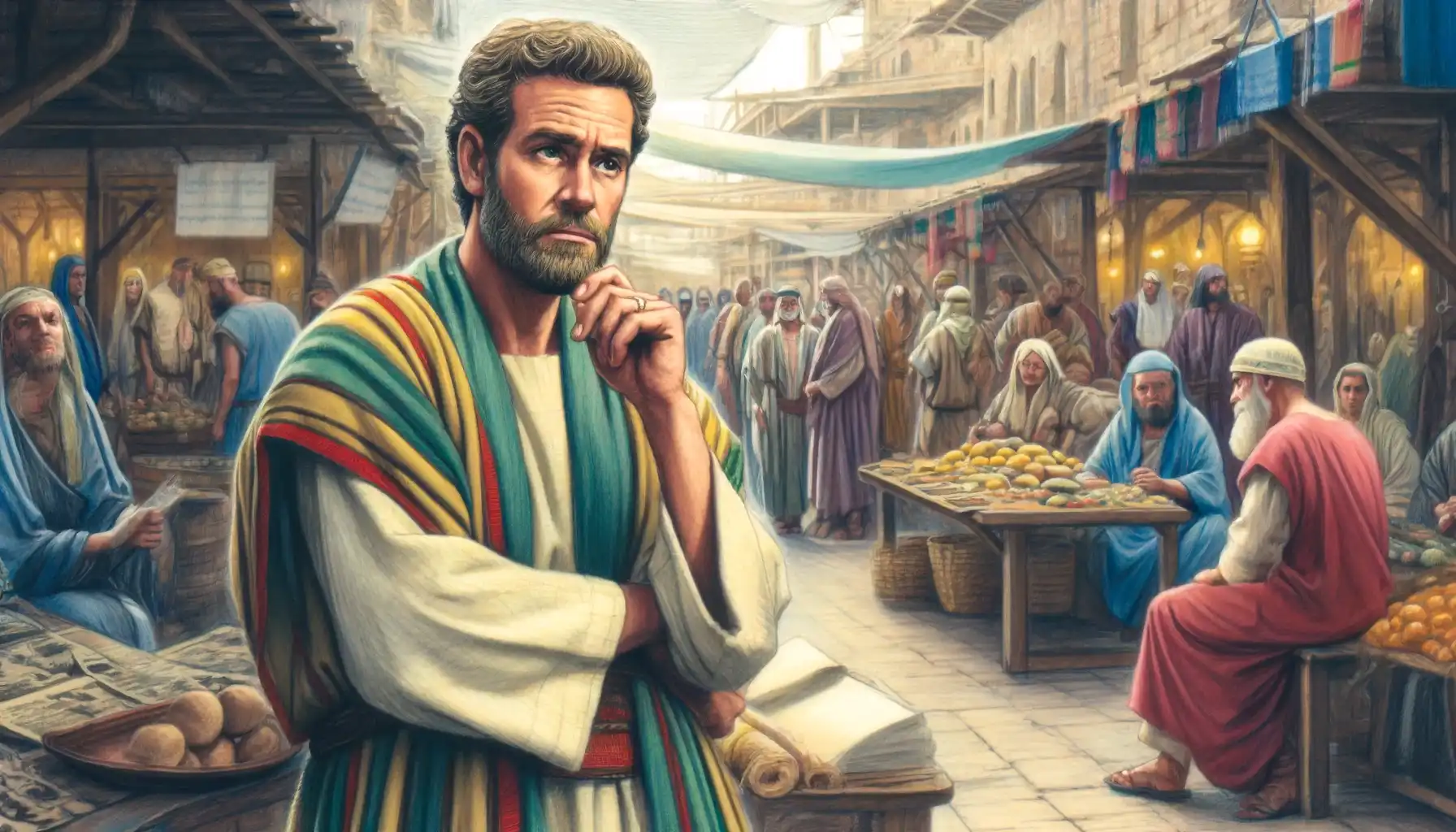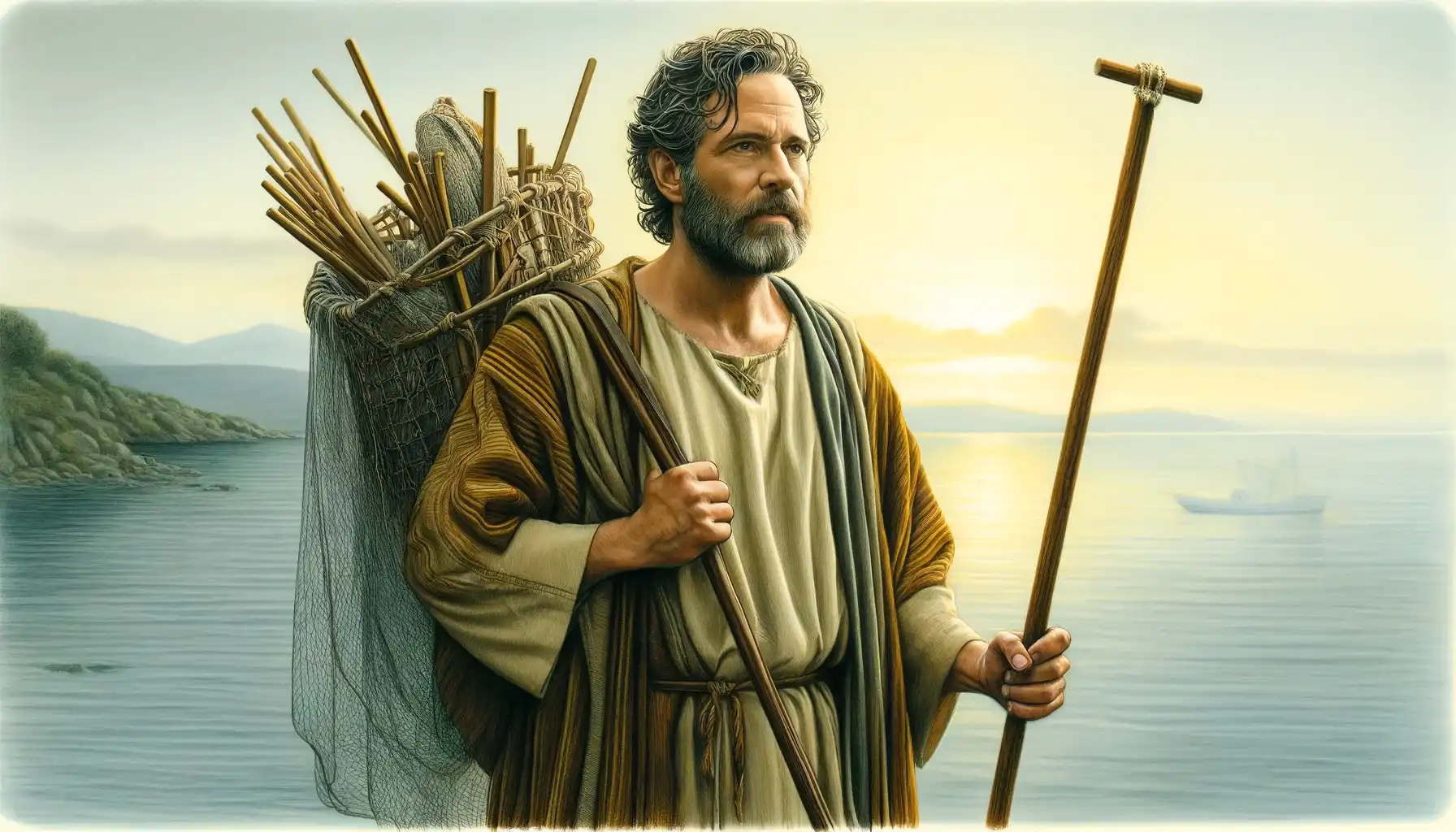John the Baptist, the forerunner of Jesus, baptized Him in the Jordan River, heralding His ministry with a message of repentance and preparation for the Kingdom of God, and was later executed by Herod Antipas.
Paul, originally known as Saul of Tarsus, was a major apostle to the Gentiles and a foundational figure in the establishment of Christianity, renowned for his dramatic conversion, extensive missionary journeys, and the authorship of many influential New Testament Epistles.
Simon the Zealot, one of the Twelve Apostles, is noted for his background as a possible member of the Jewish political movement opposing Roman rule, indicating a fervent zeal that he redirected towards spreading Jesus’ teachings after the Resurrection, embarking on missionary journeys to Egypt and Persia and ultimately being martyred, a testament to his deep commitment to the Christian faith and his diverse background enriching the early Christian community.
Thaddaeus, also known as Judas son of James, is a less prominent but significant apostle in the New Testament, distinguished from Judas Iscariot and known for his questioning of Jesus about His revelations, extensive missionary journeys across regions including Judea, Samaria, and Syria.
James the Less, one of the Twelve Apostles of Jesus Christ and traditionally identified as the son of Alphaeus, is known for his humility and lesser prominence compared to James the Greater, likely referred to as “the Less” due to his younger age or smaller stature.
Thomas the Apostle, also known as Didymus, is renowned for his initial skepticism about Jesus’ resurrection, famously declaring he would not believe until he could see and touch Jesus’ wounds himself, a moment that epitomizes his rational character; this skepticism was transformed into profound faith when Jesus appeared and invited him to verify His wounds, leading Thomas to exclaim, “My Lord and my God!”—one of the clearest proclamations of Christ’s divinity in the New Testament. Post-resurrection, Thomas is believed to have traveled to India, where he established one of the oldest Christian communities and was eventually martyred, his legacy enduring as a symbol of faith that develops from personal encounter and sacrifice, commemorated as the patron saint of architects and the blind, with his feast days celebrated in both the Western and Eastern Churches.
Bartholomew, also known as Nathanael in the Gospel of John, is a biblical figure whose journey from skepticism to profound faith exemplifies the transformation experienced by those who encounter Jesus; recognized by Jesus as “an Israelite indeed, in whom there is no deceit,” Nathanael’s straightforwardness and integrity mark him as a disciple who is both honest in his doubts and sincere in his conversion. Following Jesus’ resurrection and ascension, he embarked on missionary journeys to diverse regions including India, Armenia, Ethiopia, and Southern Arabia, facing significant challenges but also contributing to the Christian tradition in these areas; his martyrdom, characterized by being flayed alive and then crucified, underscores his commitment to his faith and his willingness to endure immense suffering for his belief in the Gospel, with his legacy continuing in his veneration as a saint, celebrated on August 24th in the Western Church and June 11th in the Eastern Church, and revered as the patron saint of various professions and causes.
Philip the Apostle, originally from Bethsaida and one of the original twelve disciples of Jesus, is depicted in the New Testament as a figure who sought practical comprehension of Jesus’ teachings, exemplified by his interactions during key events such as the feeding of the 5000 and the Last Supper. Known for his questioning nature, Philip played a crucial role in the early Christian church’s expansion, particularly among Greek-speaking communities, as highlighted by his encounter with the Ethiopian eunuch in the Acts of the Apostles. Continuing his ministry across regions such as Greece, Syria, and Phrygia, Philip’s evangelistic efforts often met with resistance from local authorities, ultimately leading to his martyrdom by crucifixion or other means, thus symbolizing the ultimate witness to his faith and marking him as a pivotal figure in the spread of early Christianity.
Andrew, one of the twelve apostles of Jesus, is a compelling figure in Christian history, embodying the zeal and humility of early Christian apostleship; his background as a fisherman and initial discipleship under John the Baptist set the stage for his recognition of Jesus as the Messiah, leading to significant acts such as introducing his brother Peter to Jesus and facilitating key events like the feeding of the 5000. His post-resurrection missionary journeys through areas around the Black Sea and modern Greece and Turkey, and his martyrdom on an X-shaped cross in Patras, underscore his devotion and commitment, while his veneration as the patron saint of Scotland, Russia, and Greece reflects the broad geographic impact of his evangelistic missions, continuing to inspire faith and devotion through his legacy of apostolic service and sacrifice.
Peter’s life story is a powerful narrative of transformation, illustrating a journey from doubt and denial to restoration and committed leadership, resonating with themes of fallibility and redemption, and underscoring the human capacity for spiritual growth and resilience, while his legacy, as both a flawed individual and a revered apostle, continues to inspire and instruct believers on the dynamics of faith, leadership, and divine grace.


